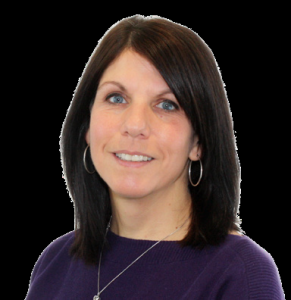17 USA, Elizabeth Coleman
United States of America
The United States of America is located in North America, bordered by Pacific and Atlantic Ocean. Medicare and Medicaid are the healthcare programs of the USA. Medicare provides coverage for those who are 65 and older, with some coverage for those 65 and younger with certain disabilities or conditions. Medicaid provides coverage for those who are below a certain income level.
 Dr. Elizabeth Coleman from St. James, MN, United States, Family Nurse Practitioner.
Dr. Elizabeth Coleman from St. James, MN, United States, Family Nurse Practitioner.
I worked at a specialty wound care center when the COVID-19 pandemic started in the US in early 2020. In addition to seeing patients in the wound center, I did rounds at the local nursing home, assisted living facility, and hospital. As the virus started to ramp up in the US, patients became worried, and some canceled appointments. Then the shutdown was announced. Daily activities drastically changed. We were only seeing the patients that absolutely needed to be seen in the clinic. The nursing homes and assisted living shut the doors to visitors. I went from working four days a week in the clinic to half a day and working from home the rest of the week.
To decrease the risk of exposure to the virus in the clinic, no one was allowed to come with the patient to appointments, so they came in alone. Patients with dementia, heart failure, and significant wound care, alone. We would attempt to exchange information with caregivers via written notes or phone calls. We would take the patient out to the car if they had a family member with them or call later with updates. Even with this, communication was poor at best. Patients, caregivers, and families were stressed. So were we! We were all on edge, worried about our patients, our families, our neighbors, and even ourselves. The fear of the unknown and the lack of clear guidelines were terrifying to us all. It felt like we were sitting around waiting for something to happen, whatever that something would be.
When COVID-19 testing became available to communities, my practice shifted again. The hospital was setting up a drive-through testing center and needed providers to do assessments and give education to people presenting. I worked in the tent as the provider several days a week. I would ask about signs and symptoms and educate them on isolating, symptom management, and when they should go to the ER. The test results were slow, taking about five days to return. I would make phone calls after hours and on weekends to give results, answer questions, and educate again on the next steps. We wore PPE all day, including respirators, gowns, and gloves. Underneath, we had layers of clothes to try to stay warm. It was a cold spring in Minnesota, with temperatures often in the 30s. We would sit around the propane heater between cars to try to get warm. I woke up every morning worried about exposure to the virus and the cold climate. It was quite miserable most days! Even though the elements were harsh, the comradery between us working in the tent and the appreciation of the people coming for testing made it feel like we were doing something to make a difference, small as it may be.
I learned many lessons through life during the pandemic. I learned the closeness of family and community that develops when life suddenly changes. Even though we could not be together physically, we bonded emotionally. We became family; we worked together, looked out for each other, and cared for each other the best we could in the beginning. Then, like families often do, we began to argue. We argued over wearing masks, gathering for the holidays, and whether to vaccinate or not vaccinate. We became divided like families sometimes do. We tried to convince them to see our side, to understand our point of view, and they did the same, but this only seemed to fuel the fire. Now, it seems there is no going back, we have each dug our heels in. Our world has changed, our family has changed. We are challenged with how to move forward. Can we accept our differences and give grace, or do we continue to argue and pass judgment on each other? Time will tell.
Additional Information About Nursing in the United States of America
There are around 4 million nurses in the USA. Around 60% of them work in the private for profit sector, 30% in the private not for profit sector, and 10% in the public sector. For education, nurses in the USA must complete a bachelor’s degree in nursing, called a BSN (Bachelor’s of Science in Nursing). To practice in the USA, nurses must pass their NCLEX. Nursing in the USA is broad with many different groups. Among them are certified nursing assistant, licensed practical nurse and registered nurse. To further advance their careers, nurses can obtain more education to become a nurse practitioner, nurse anesthetist, or obtain a masters or doctorate in nursing.
Media Attributions
- Elizabeth Coleman 1-1
